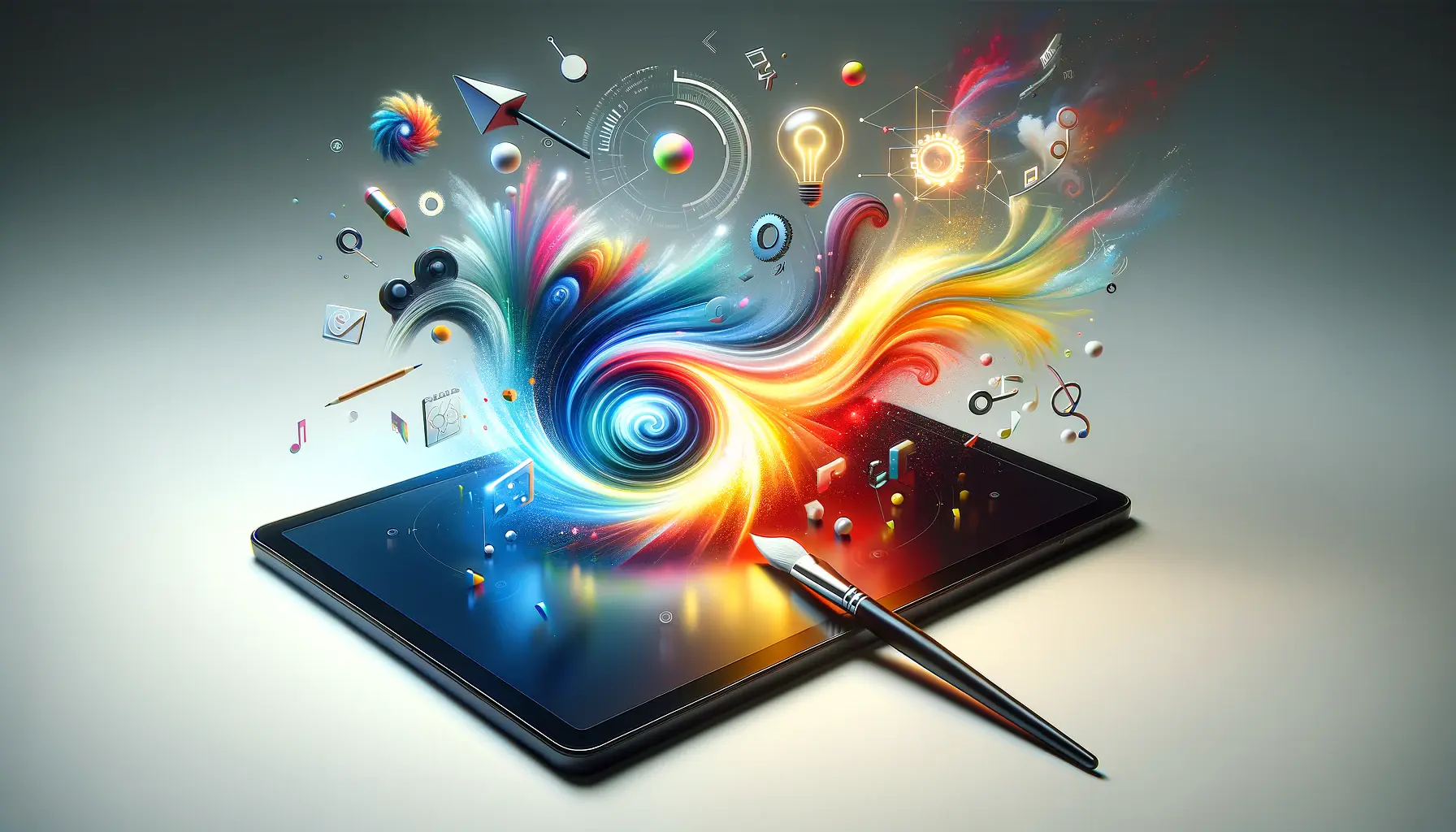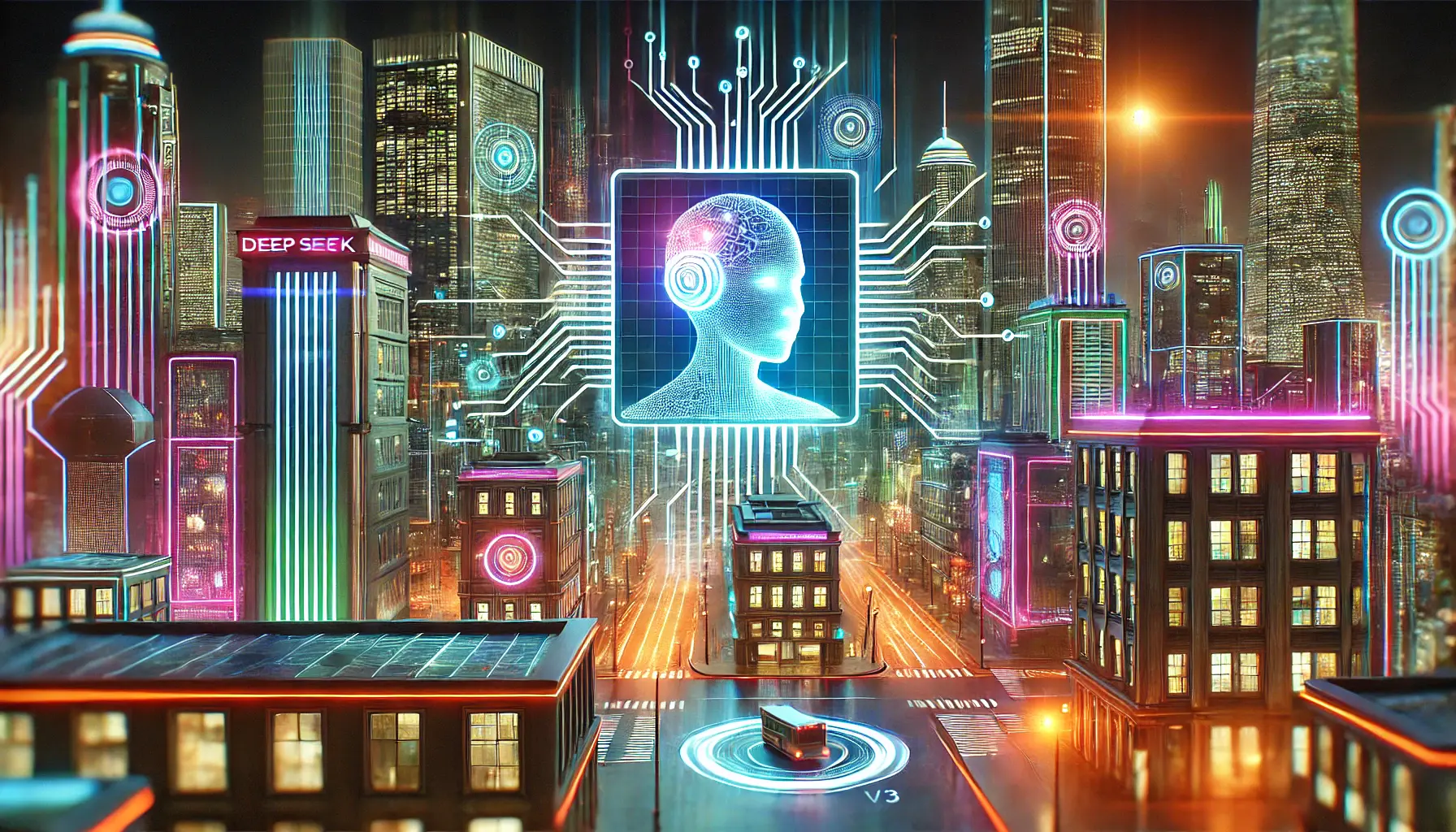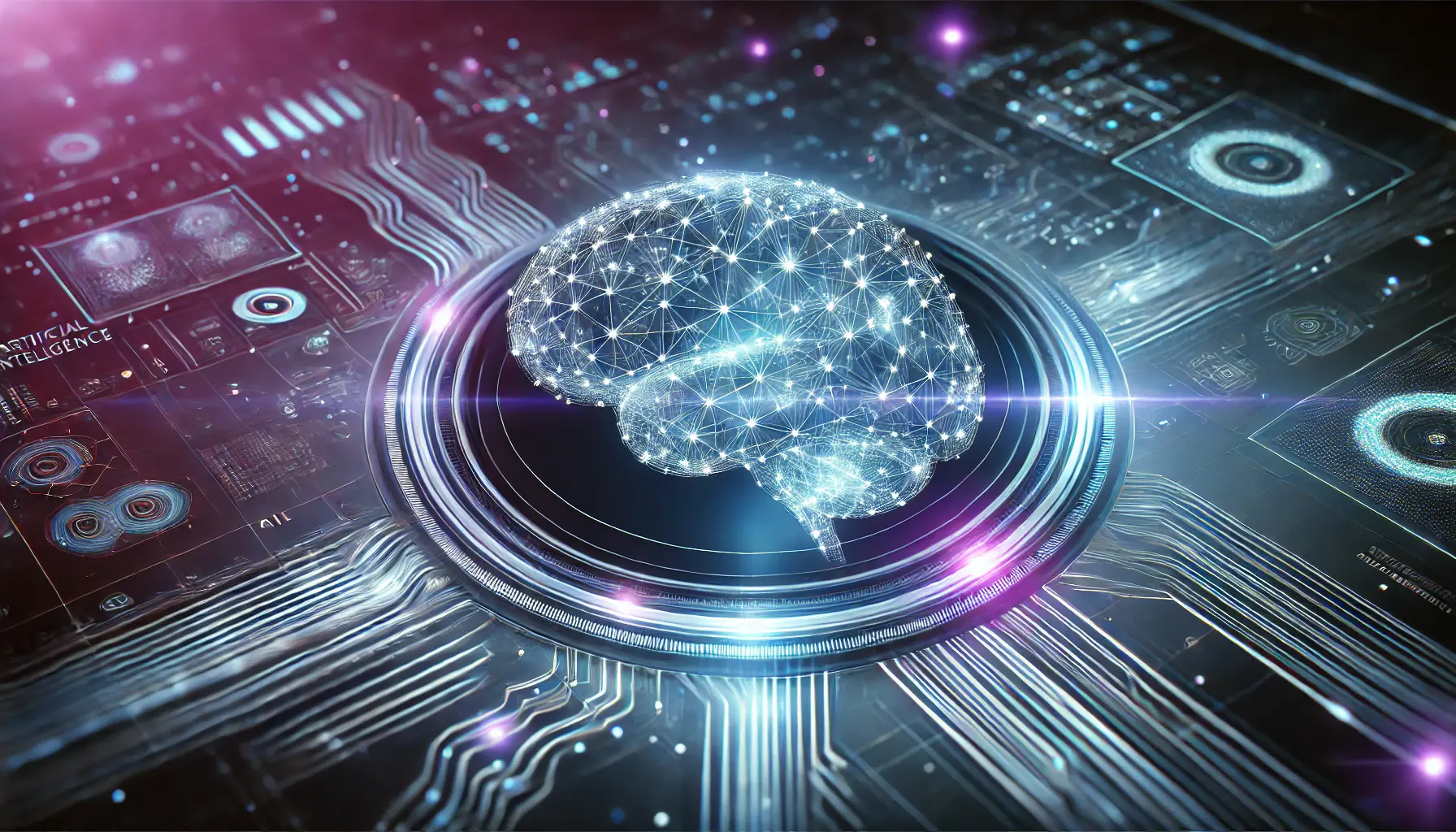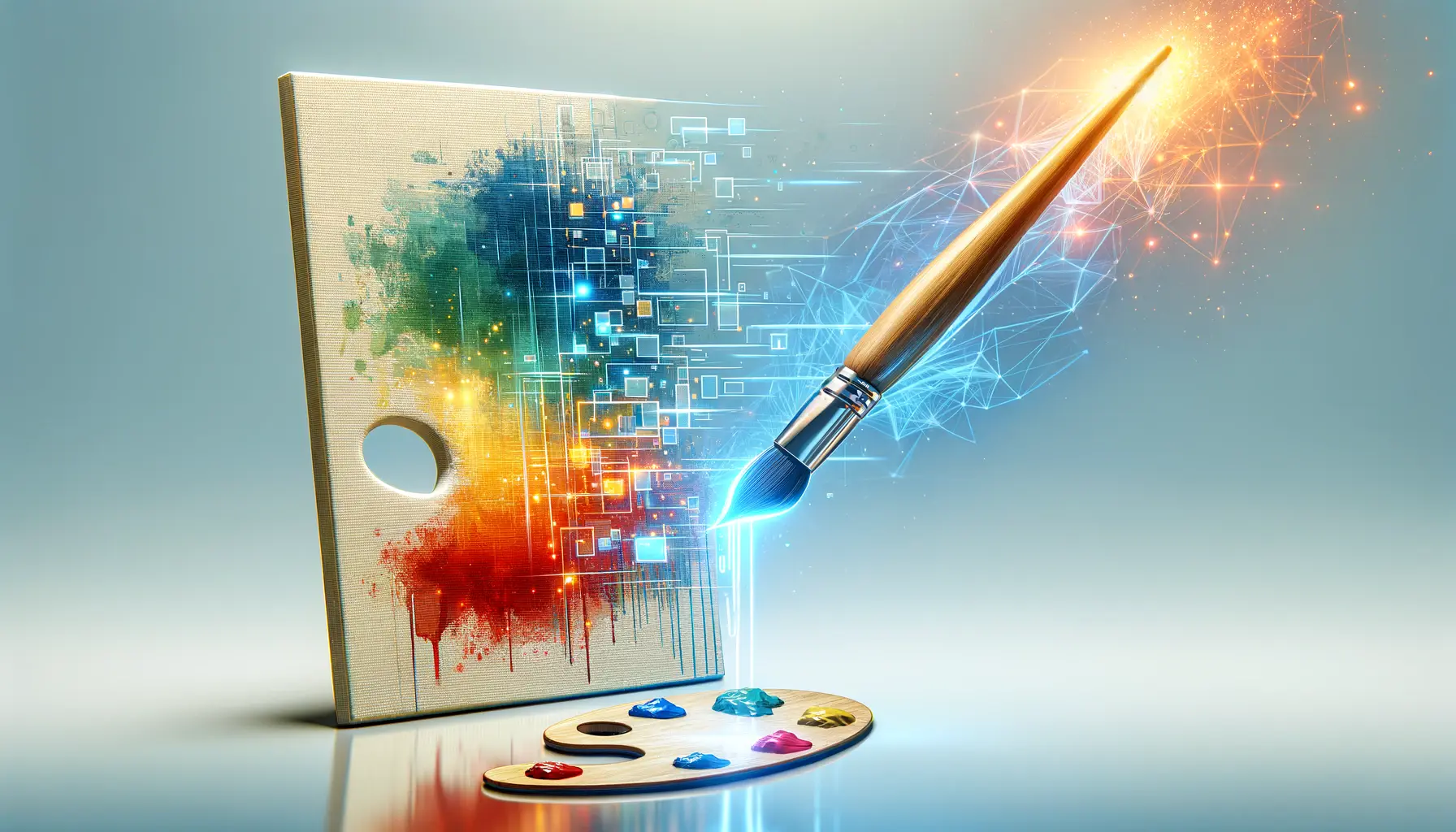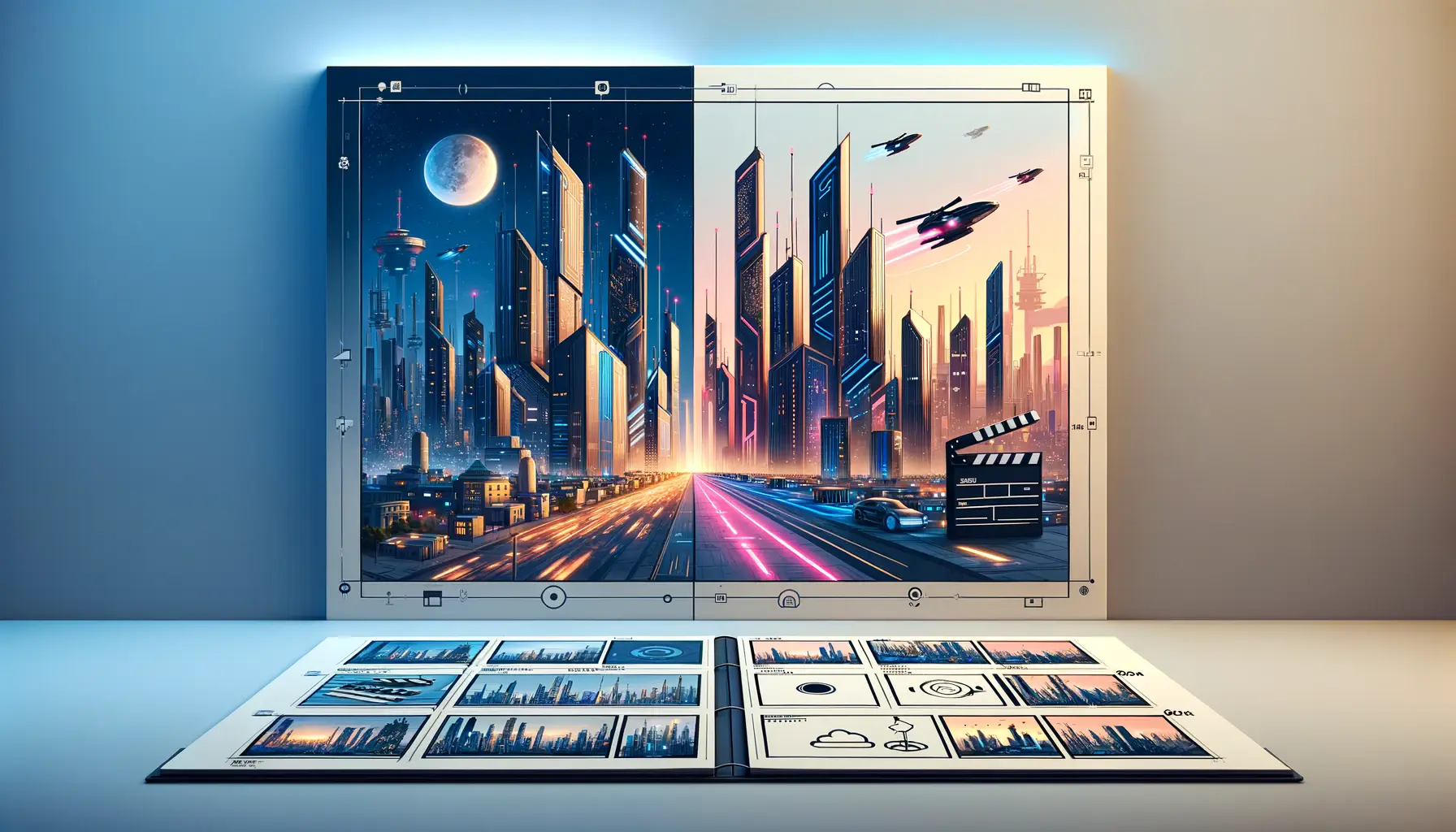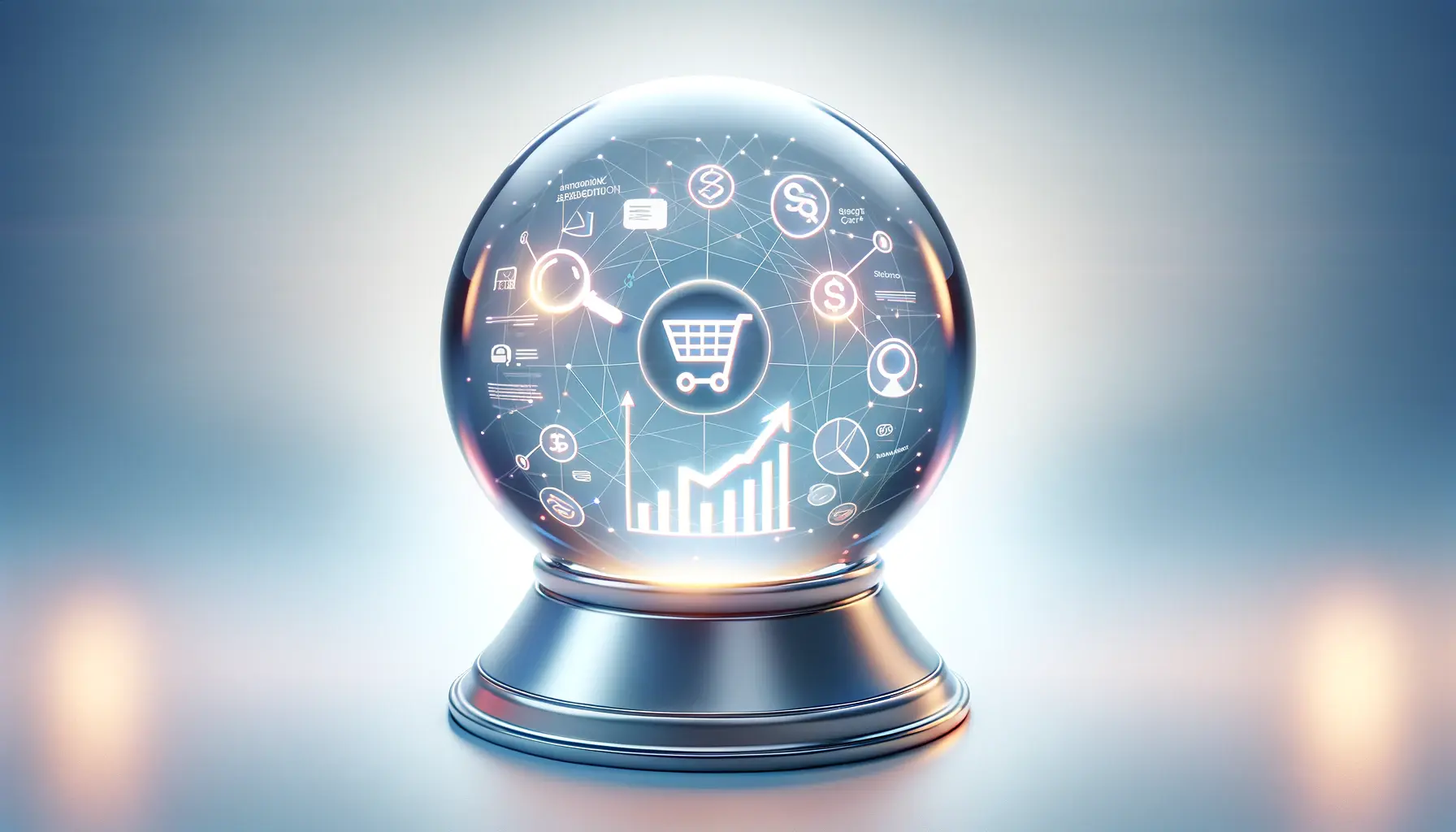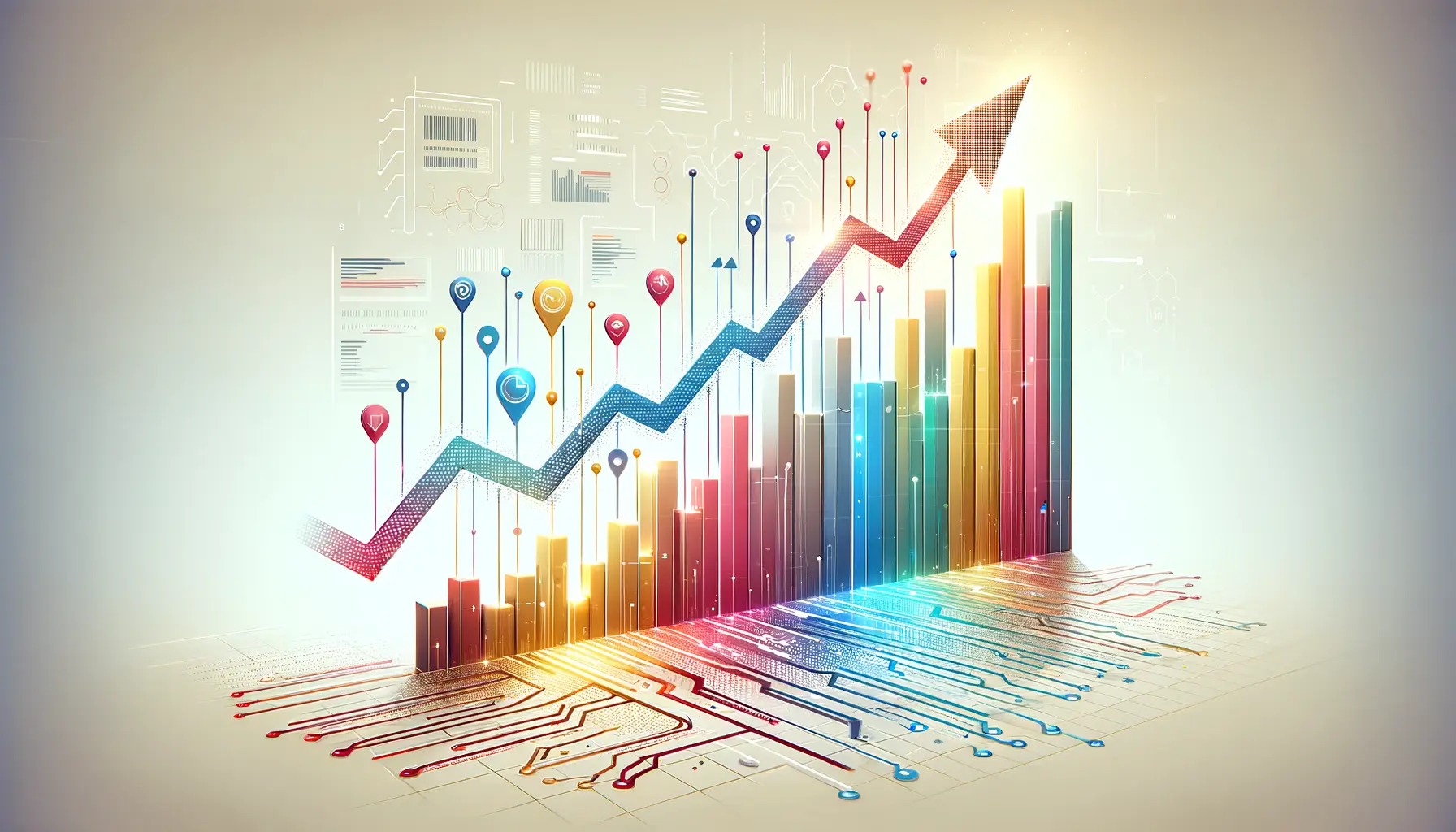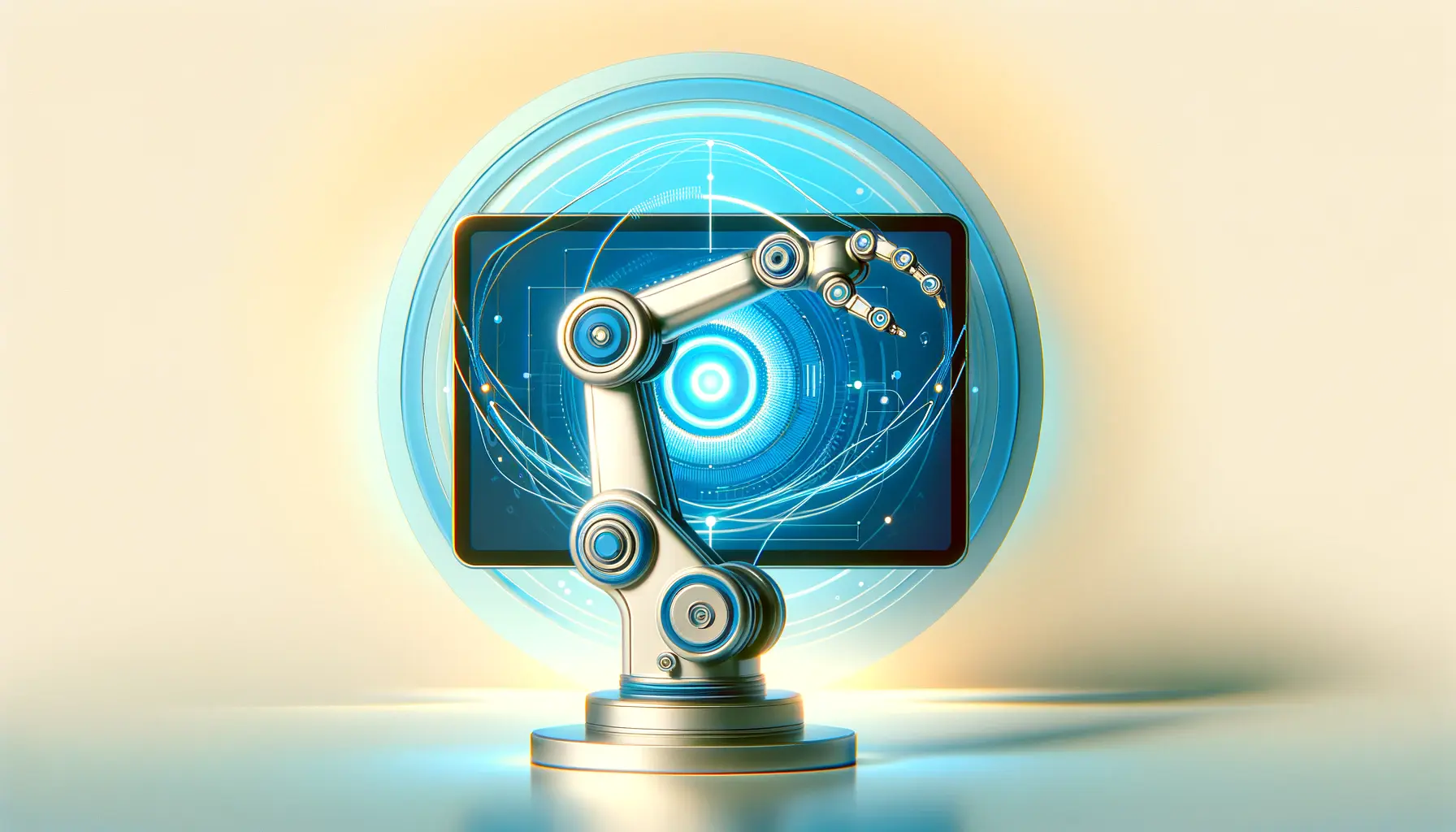The realm of artificial intelligence (AI) has been a fertile ground for innovations that stretch the boundaries of creativity and technology.
Among these innovations, DALL-E, a project by OpenAI, stands out as a pioneering force in the intersection of AI and art.
This AI model, capable of generating complex images from textual descriptions, has not only captivated the imagination of artists and technologists alike but also sparked a conversation about the future of creativity.
As we delve into the potential trajectories of AI art, it’s essential to understand the significance of DALL-E within this evolving landscape.
This model represents a leap forward in machine learning, offering a glimpse into a future where AI’s role in creative processes is both expansive and nuanced.
The implications of such technology are vast, touching upon copyright issues, the democratization of art, and the very nature of artistic originality.
- Exploring the Capabilities of DALL-E
- The Evolution of AI in Artistic Creation
- Challenges and Ethical Considerations
- Future Trends in AI Art
- Integrating AI Art into Society
- AI Art and Intellectual Property Rights
- Enhancing Creativity Through AI Art Tools
- Embracing the Future of AI Art
- FAQs on the Future of AI Art and DALL-E
Exploring the Capabilities of DALL-E
The Technological Marvel Behind DALL-E
The core of DALL-E’s innovation lies in its advanced algorithms and deep learning techniques.
By analyzing vast datasets of images and their corresponding descriptions, DALL-E learns to associate specific words and phrases with visual elements.
This training enables the AI to produce images that are not only relevant to the textual prompts but also creative and sometimes startlingly original.
Such capabilities have opened new avenues for exploring the potential of AI in art.
Artists and designers are now experimenting with DALL-E to create artworks that were previously unimaginable, pushing the boundaries of traditional art forms.
This synergy between human creativity and AI’s computational power is creating a new genre of art that is both fascinating and thought-provoking.
Impact on the Artistic Process
The introduction of DALL-E into the artistic process has sparked a debate about the role of AI in art creation.
Some view it as a tool that can enhance human creativity, offering new ways to visualize ideas and emotions.
Others, however, raise concerns about the authenticity of art created with the assistance of AI, questioning whether such creations can truly be considered original works of art.
Despite these debates, the impact of DALL-E on the art world is undeniable.
It has democratized art creation, enabling individuals without traditional artistic skills to express themselves visually.
This accessibility is transforming the art landscape, making it more inclusive and diverse.
The collaboration between human artists and AI, facilitated by tools like DALL-E, is producing a new form of art that reflects the complex interplay between technology and creativity.
The fusion of AI and human creativity, exemplified by DALL-E, is not just a technological achievement but a cultural shift, redefining the boundaries of art and authorship.
The Evolution of AI in Artistic Creation
The journey of AI in the realm of artistic creation has been marked by rapid advancements and transformative innovations.
DALL-E, as a forefront technology, exemplifies the pinnacle of this evolution, showcasing how deep learning can be harnessed to not only understand but also generate art that resonates with human emotions and aesthetics.
This evolution is not just a technical achievement but a testament to the potential of AI to become an integral part of the creative process.
As we explore the evolution of AI in art, it’s crucial to recognize the milestones that have paved the way for technologies like DALL-E.
From early experiments in algorithmic art to the development of neural networks capable of producing intricate designs, each step has expanded the horizons of what’s possible with AI.
Key Milestones in AI Art
- Algorithmic Beginnings: The initial forays into AI art were characterized by simple algorithmic patterns and shapes, laying the groundwork for more complex creations.
- Neural Network Art: With the advent of neural networks, AI began to produce more sophisticated and detailed artworks, learning from vast datasets of existing art.
- Generative Adversarial Networks (GANs): The introduction of GANs marked a significant leap, enabling AI to create art that is increasingly difficult to distinguish from that created by humans.
- Text-to-Image Models: The development of text-to-image models like DALL-E represented a groundbreaking moment, allowing for the generation of art from textual descriptions, thereby bridging the gap between linguistic concepts and visual representation.
The Role of AI in Expanding Creative Boundaries
The integration of AI into the art world has not only expanded the toolkit available to artists but also challenged our perceptions of creativity and originality.
By automating certain aspects of the creative process, AI allows artists to explore new forms of expression and to experiment with techniques that would be impossible or impractical to achieve manually.
This collaboration between human and machine opens up a realm of possibilities, enabling the creation of art that transcends traditional mediums and styles.
Furthermore, AI’s ability to analyze and learn from existing art has led to the generation of works that reflect a deep understanding of artistic styles and trends.
This capacity not only enhances the aesthetic appeal of AI-generated art but also allows for a dialogue between the creations of the past and the innovations of the present, enriching the cultural landscape with new perspectives and interpretations.
AI’s evolution in art underscores a shift towards collaborative creativity, where technology acts not as a replacement for human ingenuity but as a catalyst that amplifies it.
Challenges and Ethical Considerations
The integration of AI like DALL-E into the art world, while revolutionary, also brings forth a myriad of challenges and ethical considerations.
As we navigate this new terrain, it becomes imperative to address the implications of AI-generated art, particularly in terms of copyright, originality, and the impact on the artist community.
These issues are not just legal technicalities but touch on the very essence of what it means to create and appreciate art.
Understanding and addressing these challenges is crucial for fostering a healthy ecosystem where AI and human creativity can coexist and flourish.
The conversation around these topics is ongoing, involving artists, technologists, legal experts, and the public in a dialogue about the future of art in the age of AI.
Copyright and Ownership Issues
- The question of who holds the copyright to an AI-generated piece of art is complex, involving the creators of the AI, the users who input prompts, and potentially even the original artists whose works were used in the AI’s training data.
- This complexity necessitates clear guidelines and policies that balance the rights of all parties involved, ensuring that creators are fairly compensated while encouraging innovation and experimentation.
Authenticity and Originality
- AI-generated art challenges traditional notions of authenticity and originality, raising questions about the value and uniqueness of art that is not created through conventional human effort.
- Addressing these concerns requires a nuanced understanding of creativity, recognizing the role of AI as a tool that can enhance human expression rather than diminish it.
Impact on the Artist Community
- The advent of AI in art has sparked concerns about the potential displacement of human artists, particularly in commercial and applied art fields.
- However, by fostering collaboration between AI and artists, there is an opportunity to create a symbiotic relationship that enhances the capabilities of both and opens up new avenues for artistic exploration.
The ethical landscape of AI-generated art is complex and evolving.
As we continue to explore the possibilities of AI like DALL-E, it is essential to engage in thoughtful discussion and policy-making that ensure the ethical use of AI in art.
This includes respecting copyright laws, acknowledging the contributions of human artists, and exploring new models of creativity that AI enables.
Navigating the ethical considerations of AI art requires a balanced approach that respects both the innovative potential of AI and the rights and roles of human creators.
Future Trends in AI Art
The landscape of AI art, particularly with technologies like DALL-E, is on the cusp of significant transformation.
As we look to the future, several trends are emerging that promise to redefine the boundaries of artistic creation, distribution, and appreciation.
These trends not only highlight the evolving capabilities of AI but also reflect broader shifts in society’s relationship with technology and creativity.
Understanding these trends is essential for artists, technologists, and enthusiasts alike, as they navigate the future of AI art.
They offer a glimpse into a world where art is more accessible, collaborative, and diverse, challenging us to rethink our definitions of creativity and artistic value.
Increased Collaboration between AI and Human Artists
- One of the most significant trends is the deepening collaboration between AI and human artists. This partnership is moving beyond mere tool usage, evolving into a co-creative process where AI contributes ideas and alternatives that enhance the creative vision of human artists.
- This collaboration is expected to yield new art forms and styles, born from the unique capabilities of AI and the creative direction of human artists, further blurring the lines between human and machine-generated art.
Democratization of Art Creation
- AI technologies like DALL-E are making art creation more accessible to people without formal artistic training. This democratization allows for a broader range of voices and perspectives to be expressed through art, enriching the cultural landscape with diverse narratives and experiences.
- As AI art tools become more user-friendly and widely available, we can expect a surge in creative expression across different mediums, enabling a more inclusive art community.
Exploration of New Artistic Mediums and Forms
- The capabilities of AI are pushing the boundaries of traditional artistic mediums, enabling the exploration of new forms that combine digital and physical elements. From interactive installations to AI-generated music and literature, the potential for innovation is vast.
- This exploration is not limited to the digital realm; AI is also influencing traditional art forms, such as painting and sculpture, by providing artists with new tools and inspirations.
The future of AI art is not just about technological advancements but also about the cultural shifts they engender.
As AI becomes more integrated into the art world, it challenges us to expand our understanding of creativity and to embrace the myriad ways in which art can be created and experienced.
The trends we see today are just the beginning of a journey that promises to transform our artistic landscape in profound and exciting ways.
The future of AI art lies in the harmonious blend of technology and human creativity, leading to unprecedented forms of expression and a more inclusive art world.
Integrating AI Art into Society
The integration of AI-generated art into society raises intriguing questions about the role of art in our lives and the ways in which technology can enhance this role.
As AI art becomes more prevalent, from digital galleries to physical exhibitions, its acceptance and appreciation by the public are crucial for its continued evolution and impact.
This integration process involves not only showcasing AI art but also educating the public about its value, potential, and the technology behind it.
As we navigate this integration, it’s essential to consider both the opportunities and challenges it presents.
The potential for AI art to inspire new forms of creative expression and to make art more accessible is immense, but achieving widespread acceptance requires addressing concerns about authenticity, originality, and the impact on traditional art forms.
Public Exhibitions and Digital Galleries
- The rise of digital galleries and online platforms has made it easier than ever to showcase AI-generated art to a global audience. These venues offer a space for artists to share their work, engage with viewers, and explore the possibilities of AI as a creative tool.
- Physical exhibitions of AI art are also becoming more common, providing a tangible experience of the artworks and allowing audiences to appreciate the intricacies of AI-generated pieces in person.
Educational Initiatives and Workshops
- To foster a deeper understanding and appreciation of AI art, educational initiatives and workshops play a vital role. These programs aim to demystify the technology behind AI art, highlighting its creative potential and addressing common misconceptions.
- By engaging directly with the public, artists and technologists can showcase the collaborative process between human and machine, encouraging a more nuanced conversation about the future of art.
Challenges in Public Perception
- Despite the growing interest in AI-generated art, challenges remain in public perception. Concerns about the authenticity of AI art and its impact on human artists can hinder its acceptance.
- Addressing these concerns requires open dialogue and collaboration between artists, technologists, and the public, emphasizing the complementary relationship between human creativity and AI.
The integration of AI art into society is a dynamic process, reflecting broader trends in technology, culture, and art.
As we continue to explore the possibilities of AI-generated art, the way we engage with, understand, and value art is likely to evolve, offering new perspectives on creativity and expression in the digital age.
The successful integration of AI art into society hinges on our ability to appreciate the unique contributions of AI to the creative process, while also valuing the irreplaceable role of human creativity.
AI Art and Intellectual Property Rights
The surge in AI-generated art, exemplified by technologies like DALL-E, has brought intellectual property rights to the forefront of discussions within the art and legal communities.
As AI continues to play a significant role in the creation of art, the traditional frameworks of copyright and intellectual property face new challenges.
These challenges revolve around the ownership of AI-generated works, the use of copyrighted material in training AI models, and the implications for artists and creators in the digital age.
Addressing these challenges is crucial for ensuring that the advancement of AI art occurs within a legal framework that protects the rights of all stakeholders, including artists, developers, and the public.
The development of new legal precedents and policies will play a pivotal role in shaping the future of AI art and its integration into society.
Ownership and Copyright in AI-Generated Art
- The question of ownership in AI-generated art is complex, given that these works are produced by algorithms based on inputs from human users. Determining who holds the copyright—the creator of the AI, the user who provided the prompt, or potentially the AI itself—requires careful consideration and legal innovation.
- Current copyright laws are not fully equipped to address the nuances of AI-generated content, necessitating updates or new legislation that reflects the collaborative nature of AI art creation.
Use of Copyrighted Material in Training AI
- Many AI models, including those used for generating art, are trained on vast datasets that may include copyrighted works. This raises questions about the legality of using such material for training purposes and the potential need for licensing agreements or fair use provisions.
- Developing clear guidelines for the use of copyrighted material in AI training is essential for fostering innovation while respecting the rights of original creators.
Implications for Artists and Creators
- The rise of AI-generated art has implications for artists and creators, particularly regarding the competition with AI for commercial opportunities and the use of their works in training AI models without consent or compensation.
- Creating a legal framework that supports artists and ensures fair compensation for their contributions to AI training datasets is critical for maintaining a vibrant and equitable art ecosystem.
The intersection of AI art and intellectual property rights is a rapidly evolving area, requiring ongoing dialogue and collaboration between legal experts, technologists, and the art community.
By addressing these challenges proactively, we can create a supportive environment for the continued growth and innovation of AI-generated art, ensuring that it enriches our cultural landscape while respecting the rights and contributions of all involved.
Assuming that current intellectual property laws can fully address the complexities of AI-generated art without adaptation or revision is a misconception that overlooks the unique collaborative nature of AI and human creativity.
Enhancing Creativity Through AI Art Tools
The advent of AI art tools like DALL-E has not only transformed the landscape of artistic creation but also opened up new avenues for enhancing human creativity.
These tools, powered by advanced algorithms and machine learning, offer artists and non-artists alike the opportunity to explore new creative territories, experiment with different styles, and express ideas in visually compelling ways.
The democratization of art through AI tools is a testament to the potential of technology to enrich human expression and broaden the scope of who can participate in the act of creation.
As we delve into the ways AI art tools enhance creativity, it’s important to recognize their role not as replacements for human creativity but as amplifiers and collaborators.
This perspective shifts the narrative from one of competition to one of co-creation, where AI and human ingenuity work hand in hand to push the boundaries of what’s possible in art.
Expanding the Creative Process
- AI art tools enable individuals to visualize concepts and ideas that may be difficult to articulate or render through traditional means. This capability allows for a more inclusive approach to art-making, where the barrier to entry is significantly lowered.
- The iterative nature of working with AI tools encourages experimentation and exploration, leading to unexpected and often inspiring results. Artists can quickly generate multiple variations of a concept, refining their vision as they interact with the AI.
Access to New Styles and Techniques
- One of the most exciting aspects of AI art tools is their ability to mimic a wide range of artistic styles, from classical to contemporary. This access allows artists to experiment with styles outside their usual repertoire, fostering a deeper understanding and appreciation of art history and theory.
- Furthermore, AI tools can introduce artists to new techniques and mediums, inspiring them to incorporate these elements into their work. This cross-pollination of ideas and practices enriches the artistic community, driving innovation and diversity in art.
Fostering Collaboration and Learning
- The collaborative potential of AI art tools extends beyond the artist-machine dynamic. These tools can facilitate collaboration among artists, educators, and the public, creating communities of practice that share insights, techniques, and inspiration.
- Educational opportunities abound as AI art tools become more integrated into curricula and workshops, offering hands-on experiences with cutting-edge technology and fostering a culture of continuous learning and innovation.
The role of AI art tools in enhancing creativity is multifaceted, offering new opportunities for expression, learning, and collaboration.
As we continue to explore and understand the capabilities of these tools, the potential for creative growth and innovation seems boundless.
The future of art, enriched by AI, promises a landscape where creativity is more accessible, diverse, and collaborative than ever before.
The true potential of AI art tools lies in their ability to serve as catalysts for human creativity, opening up new possibilities for expression and exploration in the art world.
Embracing the Future of AI Art
The exploration of AI art, particularly through the lens of DALL-E, reveals a future where the boundaries between human creativity and technological innovation are increasingly blurred.
As we stand on the brink of this new era, the potential for AI to transform the art world is both exhilarating and daunting.
The journey of integrating AI into the creative process has unveiled challenges, ethical considerations, and the undeniable potential for a more inclusive and diverse artistic landscape.
The Synergy of Human and Machine Creativity
The collaboration between human artists and AI, exemplified by tools like DALL-E, underscores a future where creativity is not confined by technical skill or access to traditional materials.
This partnership promises a democratization of art creation, making it possible for anyone with an idea to bring it to visual fruition.
The synergy of human and machine opens up new avenues for artistic expression, challenging us to redefine what we consider art and who we consider artists.
Navigating the Ethical Landscape
As we embrace the future of AI art, navigating the ethical landscape becomes paramount.
Issues of copyright, originality, and the impact on the artist community require thoughtful consideration and dialogue.
The development of frameworks that support both innovation and the rights of creators will be crucial in ensuring that the evolution of AI art enriches the cultural fabric without diminishing the value of human creativity.
The Role of AI in Expanding Artistic Horizons
- Enhancing creative processes by offering new tools and perspectives.
- Democratizing art creation, making it accessible to a broader audience.
- Fostering a deeper appreciation for art through educational initiatives and public exhibitions.
The integration of AI into the art world is not just a technological trend but a cultural shift that reflects our evolving relationship with creativity and technology.
The future of AI art, as seen through the development and application of models like DALL-E, offers a glimpse into a world where art is more accessible, diverse, and collaborative.
This future promises to challenge our preconceptions about creativity, pushing us to explore new forms of expression and to appreciate the infinite possibilities that arise when human imagination merges with machine intelligence.
In conclusion, the future of AI art is a journey of discovery, innovation, and collaboration.
As we continue to explore this uncharted territory, the potential for AI to enhance human creativity and transform the art world is boundless.
By embracing the challenges, engaging in ethical discussions, and fostering a culture of collaboration, we can ensure that the future of AI art is as vibrant and inclusive as the myriad of creations it promises to inspire.
FAQs on the Future of AI Art and DALL-E
Explore common questions about the revolutionary intersection of artificial intelligence and art through DALL-E.
DALL-E is an AI model developed by OpenAI, capable of generating complex images from textual descriptions, revolutionizing the way we create and perceive art.
DALL-E democratizes art creation, allowing individuals without traditional artistic skills to express themselves visually, thus expanding the art community.
Yes, DALL-E can generate images in a wide range of styles, from classical to contemporary, based on the textual prompts it receives.
Key concerns include copyright issues, the originality of AI-generated art, and the potential impact on the livelihoods of human artists.
AI-generated art is a subject of debate; while it’s created by AI, the conceptual input and creative prompts from humans play a crucial role in its originality.
DALL-E challenges existing copyright laws, necessitating new legal frameworks to address the unique nature of AI-generated content.
Yes, DALL-E acts as a tool that amplifies human creativity, offering new ways to visualize ideas and pushing the boundaries of traditional art forms.
The future promises a blend of human and AI collaboration, creating new art forms and styles that were previously unimaginable, enriching the cultural landscape.
